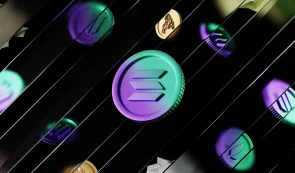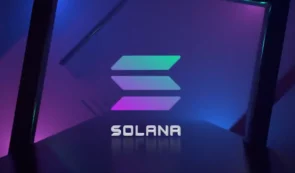What is Solana
Solana is a blockchain platform designed for decentralized, scalable applications. Founded by Anatoly Yakovenko in 2020, Solana is an open-source project currently run by a Geneva-based foundation, and Solana Labs built the blockchain itself.
Solana is touted to be one of the fastest blockchains in the world and the fastest-growing ecosystem in cryptocurrency, with thousands of projects spanning DeFi, NFT, Web3, and more.
The network itself is governed by a proof-of-stake (PoS) consensus mechanism and a proof-of-history (PoH) mechanism. The Solana network focuses on high transaction throughput and short processing times – the network can supposedly process around 50,000 transactions per second.
“The Ethereum Killer”
Solana is a fast-growing blockchain with striking similarities to Ethereum – often referred to as the “Ethereum Killer.”
Like Ethereum, the SOL token can be purchased on most major exchanges. The true value of the token lies in transacting on the Solana network, which has unique advantages.
Solana’s blockchain uses a proof-of-history (PoH) consensus mechanism. This algorithm uses timestamps to determine the next block in the Solana chain.
Most early cryptocurrencies, such as Bitcoin and Lightcoin, used a proof-of-work algorithm to determine the blocks in their chains. Proof of work uses a consensus mechanism that relies on miners to determine the next block.
However, this proof-of-work system is slow and resource-intensive, using huge amounts of energy. This is one of the reasons why Ethereum migrated to PoS.
Driven by its unique combination of proof-of-story and so-called delegated DPoS proof-of-stake algorithms, the main problem Solana was trying to solve was Ethereum’s scalability issues. Delegated proof of stake is a variation of the more traditional algorithm. For those in need of a refresh, the proof-of-stake mechanism is a transaction process for creating new blocks on a blockchain using a system of validators.
What problems does Solana solve?
Essentially, Solana solves two of the three problems identified by Ethereum co-founder Vitalik Buterin in his blockchain trilemma of scalability, security, and decentralization.
Although Buterin initially claimed that Eterium would address all three aspects of this trilemma, most experts believe that the network only addresses two factors: security and decentralization. Solana, however, is designed to address two parts of the trilemma: security and scalability. Solana’s proof-of-story algorithm provides unique security for the network. While the speed at which the Solana platform performs computations allows for increased scalability.
Like most of the world’s largest cryptocurrencies, SOL tokens can be traded on any number of platforms. This includes centralized exchanges like Binance.US, Coinbase, and Kraken, to name a few. In some cities worldwide, SOL tokens are even available in crypto ATMs
After purchasing SOL tokens, investors will want to store the SOL tokens in a crypto wallet after purchasing them. Unlike the name, crypto wallets are not where cryptocurrencies are stored. Instead, they are where owners store the keys to their cryptocurrencies. These wallets can be stored either online or offline. (The safest storage option is offline with a cold wallet.)
Yakovenko’s previous professional experience was in distributed systems design with leading technology companies such as Qualcomm Incorporated (QCOM). This experience made him realize that a reliable clock simplifies network synchronization, and when this happens, the resulting network will be exponentially faster, with the only limitation being its bandwidth.
Yakovenko’s innovative idea
Yakovenko suggested that the use of proof-of-story would speed up blockchain immensely compared to clockless blockchain systems, such as Bitcoin and Ethereum, which struggle to exceed 15 transactions per second (TPS) globally, a fraction of the bandwidth handled by centralized payment systems, such as Visa Inc.’s (V), which can go up to at 65,000 TPS.
Yakovenko’s initial implementation began in a private database and the C programming language. Yakovenko subsequently ported the entire codebase to the Rust programming language at the behest of his former Qualcomm colleague Greg Fitzgerald.
In February 2018, Fitzgerald began prototyping the first open-source implementation of Yakovenko’s white paper and subsequently made the first release of the project, demonstrating,



